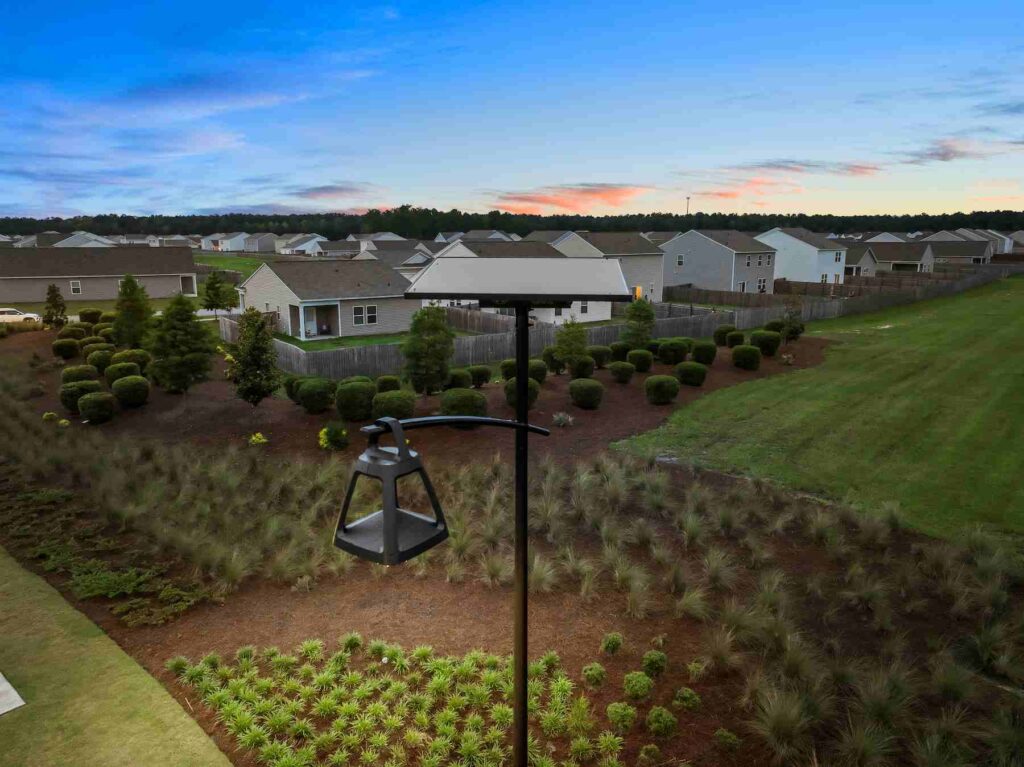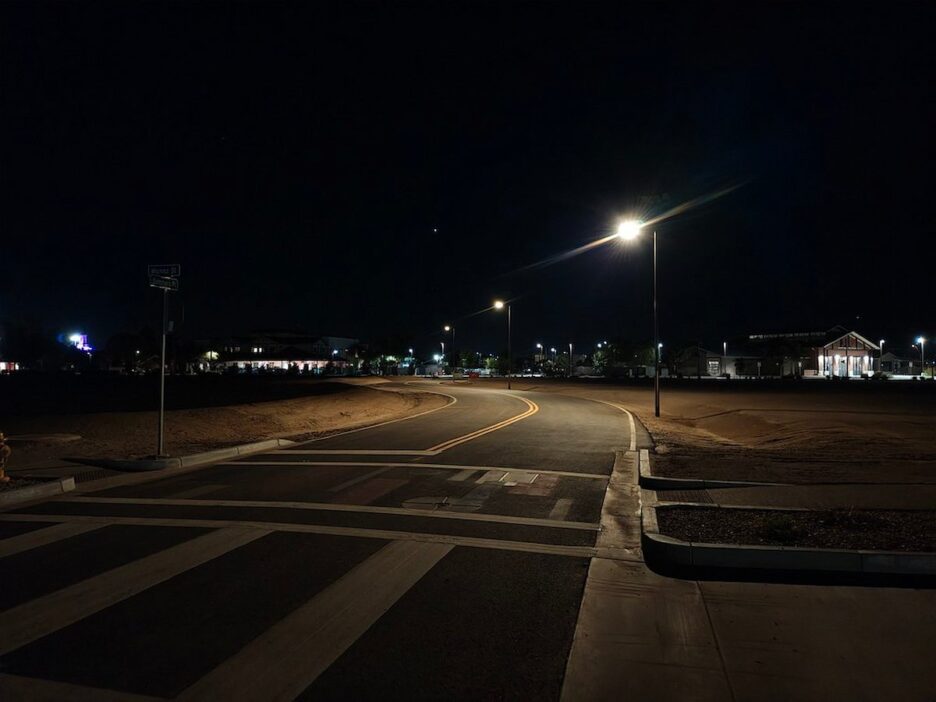Grid-free, fire-resilient lighting that keeps communities safe during PSPS events, wildfire shutoffs, and post-disaster recovery.
California’s wildfire season has become longer, more intense, and more disruptive than ever before. With Public Safety Power Shutoffs (PSPS) and wildfire-related blackouts, entire neighbourhoods are left in the dark just when communities need light the most. Dark streets and intersections make evacuations more hazardous, limit emergency response capabilities, and create additional risks for residents already under threat.
Solar street lighting offers a fire-ready solution. With no underground wiring, no grid dependency, and rapid installation, these autonomous systems continue to shine even when utilities fail. After a transformer fire in Vallejo, solar lights restored safe and reliable illumination within days, proving that cities can recover faster and maintain safety without waiting for grid repairs. For California’s fire-prone regions, solar lighting is more than infrastructure; it’s a critical piece of resilience planning.
California’s Fire-Prone Reality
Every wildfire season, California communities face the double burden of flames and blackouts. To prevent grid equipment from sparking new fires, utilities carry out Public Safety Power Shutoffs (PSPS), leaving entire neighbourhoods, roadways, and evacuation routes without lighting.
The problem is bigger than an inconvenience. When the grid goes down, streets go dark, putting drivers, first responders, and residents at greater risk during critical evacuation windows. Utility infrastructure, including transformers, underground cables, and overhead lines, remains highly vulnerable to fire damage, and once compromised, repairs can take weeks or even months. Traditional grid-tied street lighting simply can’t adapt to this reality, leaving communities exposed at the exact moment they need reliable illumination most.
Why Solar Street Lighting is Fire-Resilient
When wildfires strike or utilities cut power during Public Safety Power Shutoffs (PSPS), traditional streetlights fail at the exact moment communities need them most. Solar lighting is different; it’s designed for resilience.
- No Underground Wiring = No Fire Ignition Risk
With no buried cables, there’s nothing to spark, short-circuit, or fuel a fire.
- Self-Contained and Off-Grid
Each unit generates and stores its own power, meaning lights stay on even when the grid is down. - Lighting Critical Safety Routes
Keeps roads, evacuation corridors, and emergency shelters illuminated, supporting first responders and safe community movement. - Rapid Deployment After Disasters
Installed in less than an hour, solar lights can be quickly deployed to restore lighting in disaster-hit areas, no waiting for utilities. - Rapid Deployment After Disasters
Installed in less than an hour, solar lights can be quickly deployed to restore lighting in disaster-hit areas, no waiting for utilities. - Built for Wildfire Season Challenges
Engineered to perform reliably through California’s wildfire season, with resistance to heat, smoke, high winds, and airborne debris, ensuring communities have dependable lighting even during shutoffs and emergencies.
Solar isn’t just energy-efficient, it’s fire-safe infrastructure that gives California communities the resilience they need to face a changing climate.
California Cities Leading the Fire-Resilience Shift
Across California, municipalities are proving that solar street lighting is more than a sustainability upgrade; it’s a fire-resilience strategy. Cities are deploying solar along evacuation routes to ensure safe passage during PSPS events. Stockton is retrofitting vulnerable neighbourhoods with solar systems to guarantee lighting during wildfire shutoffs and reduce exposure to copper theft.
Further south, Stockton is exploring solar solutions for post-disaster recovery zones, recognising the role of grid-free infrastructure in accelerating emergency response. And in Vallejo, solar proved its value when lights were restored within days of a transformer fire long before traditional grid repairs were complete. Together, these cities are shaping a new model of fire-ready infrastructure that prioritizes resilience, safety, and independence from a fragile grid.

The Role of Solar in Resiliency Zones
- Supports California’s Resiliency Mandates
Solar street lighting directly contributes to statewide fire-resilience planning by ensuring lighting remains operational during PSPS events and wildfire shutoffs.
- Keeps Critical Routes and Safety Zones Lit
Provides uninterrupted illumination for evacuation corridors, public safety zones, and emergency shelters, even when the grid is down.
- Reduces Long-Term Infrastructure Costs
Eliminates the need for costly repairs to fire-damaged wiring and transformers, lowering maintenance burdens for municipalities.
- Aligns with Climate and Safety Goals
Helps cities meet state climate action targets and public safety requirements by delivering a clean, resilient, and independent lighting solution.
FAQs: Fire-Resilient Solar Lighting
Why is reliable street lighting critical during wildfires and PSPS events?
Because dark streets put lives at risk, solar lighting ensures evacuation routes, intersections, and shelters stay illuminated, even when the grid is shut down for wildfire prevention.
How do solar streetlights reduce fire risks compared to grid lighting?
Traditional systems rely on underground or overhead wiring, which can spark or fail during fires. Solar systems have no wiring to ignite or burn, making them safer for fire-prone areas.
Can solar lights handle California’s wildfire conditions, heat, smoke, and debris?
Yes. Fonroche SmartLights are tested for extreme temperatures, smoke, and environmental stress, ensuring they keep working in wildfire-prone regions.
How quickly can solar lighting restore safety after fire damage?
Solar units can be installed in less than an hour each, meaning communities can restore lighting within days, not months, after disaster strikes.
Which California cities are already using solar as part of their fire-resilience strategy?
Vallejo and Stockton are leading the way, integrating solar street lighting into resiliency zones and post-disaster recovery plans.
Keep the Lights On, Even When the Grid Fails
California’s fire-prone communities deserve more than temporary fixes; they need proven, fire-resilient infrastructure that protects people when it matters most. Fonroche solar street lighting delivers exactly that: reliable, theft-proof, blackout-proof illumination that strengthens public safety, supports emergency response, and ensures cities are prepared for every wildfire season.

